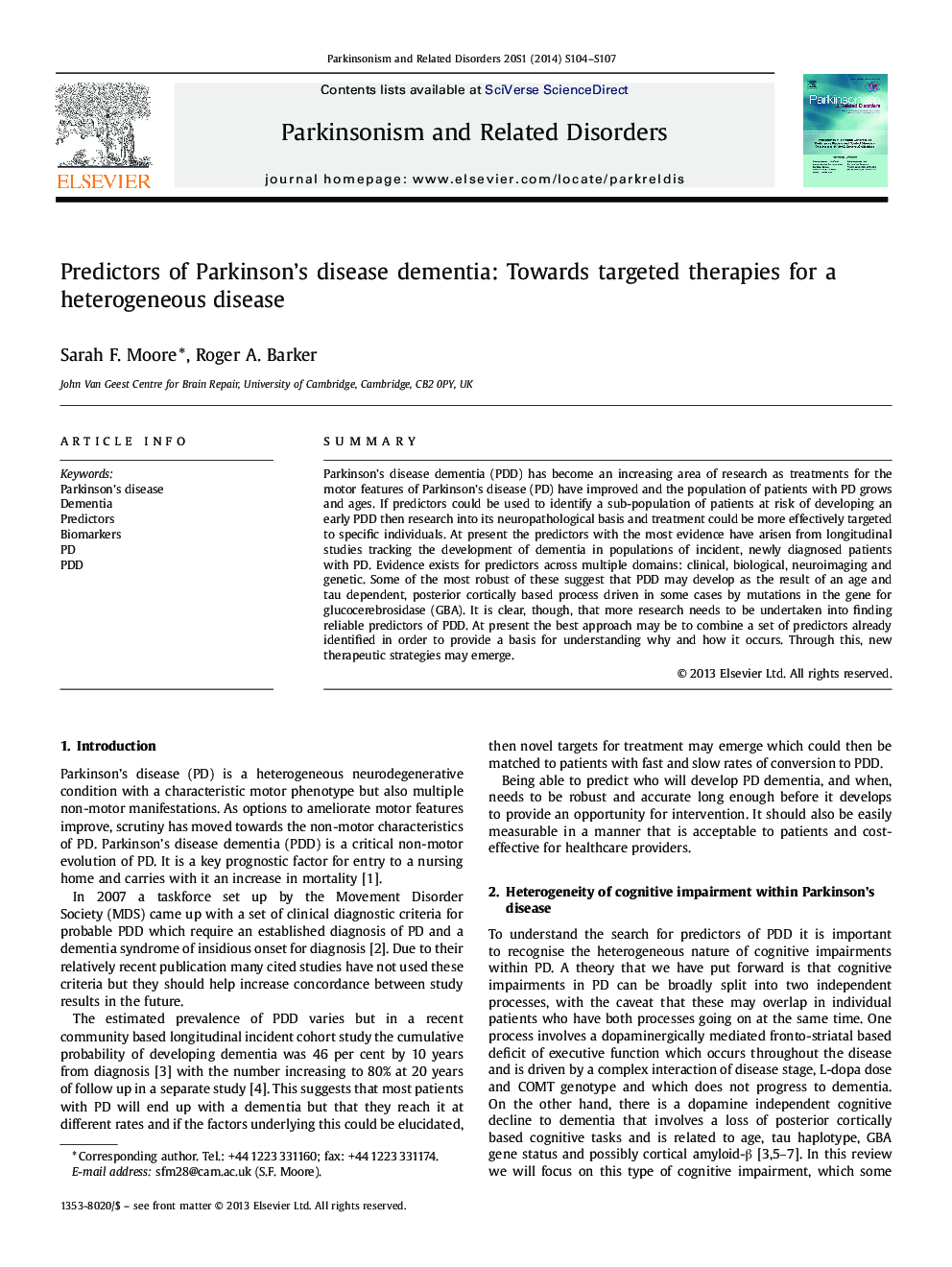| Article ID | Journal | Published Year | Pages | File Type |
|---|---|---|---|---|
| 1920603 | Parkinsonism & Related Disorders | 2014 | 4 Pages |
SummaryParkinson's disease dementia (PDD) has become an increasing area of research as treatments for the motor features of Parkinson's disease (PD) have improved and the population of patients with PD grows and ages. If predictors could be used to identify a sub-population of patients at risk of developing an early PDD then research into its neuropathological basis and treatment could be more effectively targeted to specific individuals. At present the predictors with the most evidence have arisen from longitudinal studies tracking the development of dementia in populations of incident, newly diagnosed patients with PD. Evidence exists for predictors across multiple domains: clinical, biological, neuroimaging and genetic. Some of the most robust of these suggest that PDD may develop as the result of an age and tau dependent, posterior cortically based process driven in some cases by mutations in the gene for glucocerebrosidase (GBA). It is clear, though, that more research needs to be undertaken into finding reliable predictors of PDD. At present the best approach may be to combine a set of predictors already identified in order to provide a basis for understanding why and how it occurs. Through this, new therapeutic strategies may emerge.
